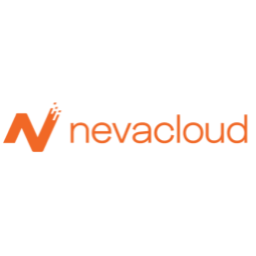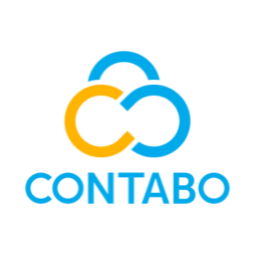Cloud Platform Models Cheatsheet
Comprehensive reference for cloud computing service models covering On-Premise, Infrastructure as a Service (IaaS), Platform as a Service (PaaS), and Software as a Service (SaaS) with detailed responsibility matrices.
Need a broader view before diving into the models? Visit our homepage for the latest VPS insights or scan real-time trends on the performance dashboard.
When you're ready to weigh providers, head to the benchmark library, compare plans in the VPS comparison tool, and review each vendor on our provider directory.
Free account required
Table of Contents
Introduction to Cloud Models
Cloud computing service models define the level of control, responsibility, and management between you and your cloud provider. Understanding these models is crucial for making informed decisions about your infrastructure architecture.
The four main cloud service models are:
- On-Premise: Traditional infrastructure where you manage everything
- IaaS (Infrastructure as a Service): Provider manages hardware, you manage the rest
- PaaS (Platform as a Service): Provider manages infrastructure and platform, you manage applications
- SaaS (Software as a Service): Provider manages everything, you just use the software
On-Premise Infrastructure
Traditional IT infrastructure where your organization owns and manages all hardware and software on your own premises.
Your Responsibility (All Layers)
- Application Code
- Security & Authentication
- Database Management
- Operating System
- Virtualization
- Networking
- Storage Hardware
- Server Hardware
Advantages
- Complete control over infrastructure
- Data stays on-premises (compliance)
- No dependency on internet connectivity
- Customizable to exact specifications
Disadvantages
- High upfront capital investment
- Requires dedicated IT staff
- Scaling is slow and expensive
- You handle all maintenance and updates
Infrastructure as a Service (IaaS)
Cloud provider manages the physical infrastructure (servers, storage, networking) while you manage the virtual machines, operating systems, and applications.
Your Responsibility
- Application Code
- Security & Authentication
- Database Management
- Operating System
- Virtualization
Cloud Provider Manages
- Networking Infrastructure
- Storage Hardware
- Server Hardware
- Physical Data Centers
Popular IaaS Providers
Best For
- Full control over OS and applications
- Custom software stack requirements
- Lift-and-shift migrations
- Development and testing environments
Use Cases
- Web hosting and applications
- Storage and backup solutions
- High-performance computing
- Big data analysis
Before deploying, review live CPU, disk, and network trends in our performance dashboard, then shortlist providers with the VPS benchmark library. Once your nodes are live, the server diagnostics toolkit helps monitor latency and DNS health, and our Kubernetes components cheatsheet pairs well if you're orchestrating workloads across clusters.
Platform as a Service (PaaS)
Cloud provider manages infrastructure, operating systems, and runtime environments. You focus solely on developing and managing your applications.
Your Responsibility
- Application Code
- Security & Authentication (App-level)
- Database Content & Schema
Cloud Provider Manages
- Database Management System
- Operating System
- Virtualization
- Networking
- Storage & Server Hardware
Popular PaaS Providers
Best For
- Rapid application development
- Teams focused on coding, not infrastructure
- Reducing operational complexity
- Multi-tenant applications
Use Cases
- Web application hosting
- API development and deployment
- Microservices architectures
- Mobile backend services
Software as a Service (SaaS)
Complete software solutions managed entirely by the provider. You simply use the application through a web browser or API, with no infrastructure concerns.
Your Responsibility
- Application Configuration
- User Data & Content
- Access Management
Cloud Provider Manages
- Application Code & Updates
- Security & Compliance
- Database, OS, Virtualization
- Networking, Storage, Hardware
- Everything Infrastructure
Popular SaaS Examples
Best For
- No technical expertise required
- Quick deployment and scaling
- Predictable subscription pricing
- Always-updated software
Use Cases
- Email and collaboration tools
- CRM and business applications
- Project management software
- Productivity applications
Responsibility Matrix
This matrix shows who is responsible for each layer of the technology stack across different cloud models.
| Stack Layer | On-Premise | IaaS | PaaS | SaaS |
|---|---|---|---|---|
| Application Code | You | You | You | Provider |
| Security | You | You | You | Provider |
| Database | You | You | Provider | Provider |
| Operating System | You | You | Provider | Provider |
| Virtualization | You | Provider | Provider | Provider |
| Networking | You | Provider | Provider | Provider |
| Storage Hardware | You | Provider | Provider | Provider |
| Server Hardware | You | Provider | Provider | Provider |
Choosing the Right Model
Select the cloud model that best aligns with your needs, expertise, and business goals:
Choose On-Premise If:
- You need complete control over your infrastructure
- Regulatory compliance requires data to stay on-site
- You have existing infrastructure investments
- Internet connectivity is unreliable or unavailable
Choose IaaS If:
- You want control over your software stack
- You need custom configurations and deployments
- You're migrating legacy applications to the cloud
- You have a skilled infrastructure team
Choose PaaS If:
- You want to focus on application development
- You don't want to manage infrastructure
- You need rapid deployment and scaling
- Your team lacks deep infrastructure expertise
Choose SaaS If:
- You need ready-to-use software solutions
- You want minimal technical overhead
- Automatic updates and maintenance are priorities
- You prefer subscription-based pricing
Need help weighing the trade-offs? Run scenarios in the VPS comparison tool, dive into provider strengths via the provider directory, and map your deployment workflow with our Docker cheatsheet when containerizing applications for the cloud.
Real-World Examples
IaaS Scenario: VPS Hosting
A startup deploys their web application on DigitalOcean Droplets:
- Provider: Physical servers, networking, storage
- Startup: Install Ubuntu, configure Nginx, deploy Laravel app
- Benefits: Full control, cost-effective, scalable
PaaS Scenario: Rapid Development
A development team uses Heroku for their application:
- Provider: Infrastructure, OS, runtime, database
- Team: Write code, git push to deploy
- Benefits: Fast deployment, no server management
SaaS Scenario: Business Tools
A company uses Salesforce for CRM:
- Provider: Everything - app, infrastructure, security
- Company: Configure workflows, add users, input data
- Benefits: No technical expertise needed, always updated
Hybrid Approach
An enterprise uses multiple models:
- IaaS (AWS EC2): Custom applications
- PaaS (Google App Engine): Microservices
- SaaS (Google Workspace): Email and collaboration
- Benefits: Best tool for each job
Compare VPS Performance Across Providers
Looking for the best IaaS provider? Check out our comprehensive VPS benchmarks to compare performance, pricing, and features across DigitalOcean, Vultr, Linode, and more.
Want strategic guidance? Learn how we test by visiting the About page, and if you have specific requirements, our team is reachable through the contact form. We’re transparent about data handling—review the privacy policy before you deploy sensitive workloads.
Keep your stack sharp with the library of VPS tools, and continue learning with related references like the OSI vs. TCP/IP cheatsheet and our ethical hacking roadmap for security context.



